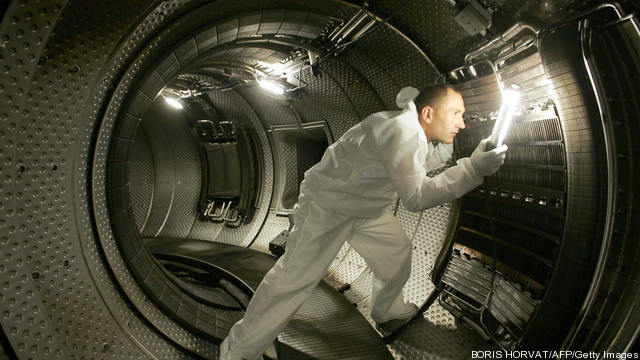
The U.S. innovation system has a rich history of developing transformational technologies that usher in new eras of economic growth. The ultimate success of all energy technologies – whether coal, natural gas, oil, hydropower, nuclear, solar, or wind – has depended upon a tradition of public support during their research and development stage.
Consistent R&D support allowed new technologies to move through the stages of innovation – from basic and applied research, to prototyping, demonstration, commercialization, until they are finally market competitive. This process often takes decades, so returns are uncertain and dispersed, meanwhile, costs are certain, immediate, and focused, – so the private sector underinvests in R&D. Since the private market is not designed to address these problems, there is a clear role for smart government policy.
However, right now America’s energy policy is hampered because politicians only plan around four-year cycles. While today’s energy policy debates in Congress focused on which tax credit will get a one year extension and which will not, we are missing opportunities to develop energy technologies for the next generation. Most troubling is a push by Congress and the Administration to cut the federal R&D budget, crippling investments in critical new technologies. The consequences of these cuts will be felt immediately – and will last for decades.
One striking example is the proposed budget cuts for fusion energy. Research in fusion has been going on for decades, and significant progress has been made. By fusing together two hydrogen isotopes – deuterium and tritium – enormous amounts of energy can be produced. Since deuterium comes from ocean water, and tritium can be produced from lithium, fusion holds the promise of providing a nearly inexhaustible supply of energy. Even better, no pollutants or greenhouse gases are emitted, and there is no threat of a nuclear meltdown like there is with the nuclear fission reactors of today.
We know that fusion works, it is already being done in labs around the world. Here in the United States, the three major experiments for research into magnetically-confined fusion (which uses powerful magnets to confine the superheated plasma) are the Princeton Plasma Physics Laboratory, the Plasma Science and Fusion Center at the Massachusetts Institute for Technology (MIT), and the DIII-D Research Program at General Atomics’ Fusion Energy Research Lab in San Diego. These experiments are supported by major scientific research institutions like Oak Ridge National Laboratory in Tennessee and by a range of businesses, contractors, and researchers in every corner of the country.
Up to now, the problem with fusion has been crafting new materials that are strong enough to withstand the heat of a fusion reaction, which needs to reach 100 million degrees, more than six times hotter than the surface of the sun. The other challenge is confining the hot plasma long enough for the reaction to take place; a process that scientists are experimenting with either magnets or lasers. But scientists, together with the private sector, are making progress in these areas. The next step is to build a fusion reactor that will produce net energy power (get more power out than is put in); one is currently under construction in France, with American support. Known as ITER, the facility is backed by seven nations including the United States, and should be completed by 2020.
Scientists are confident that the limitations to full commercialization of fusion reactors are not scientific, but budgetary. Exponential increases in power generation were achieved for twenty years leading up to the mid 1990s, but since then, budget cuts have caused delays. A program that had suffered years of atrophy was further harmed when President Obama’s fiscal year 2013 budget request called for a $45 million cut from the domestic fusion program, a drastic reduction of 16%.
The budget cuts will force MIT’s Plasma Science and Fusion Center to shut down. This facility’s “Alcator C-Mod” is a critical component of our national research program.
Cuts like this would prevent American fusion labs and companies from capitalizing on the lessons learned from the ITER experiment. MIT is doubly important because it houses the largest collection of plasma science graduate students in the country; our next generation of scientists would be trained here. Unfortunately, the prospect of the budget cut has already caused the University to delay acceptances of the incoming 2012 graduate students.
Cutting the program will start to dismantle a world class scientific workforce and send the message to our brightest science students that their best chance for career advancement will come from working abroad in France, Japan, or China.
The U.S. has a remarkable track record in developing transformational technologies that revolutionize our way of life. With much needed investment, fusion energy can transform our energy system for the next generation.
Andrew Holland is a Senior Fellow and Nicholas Cunningham is a Policy Analyst for Energy and Climate at the American Security Project, a non-partisan think tank devoted to studying questions of America’s long-term national security.
